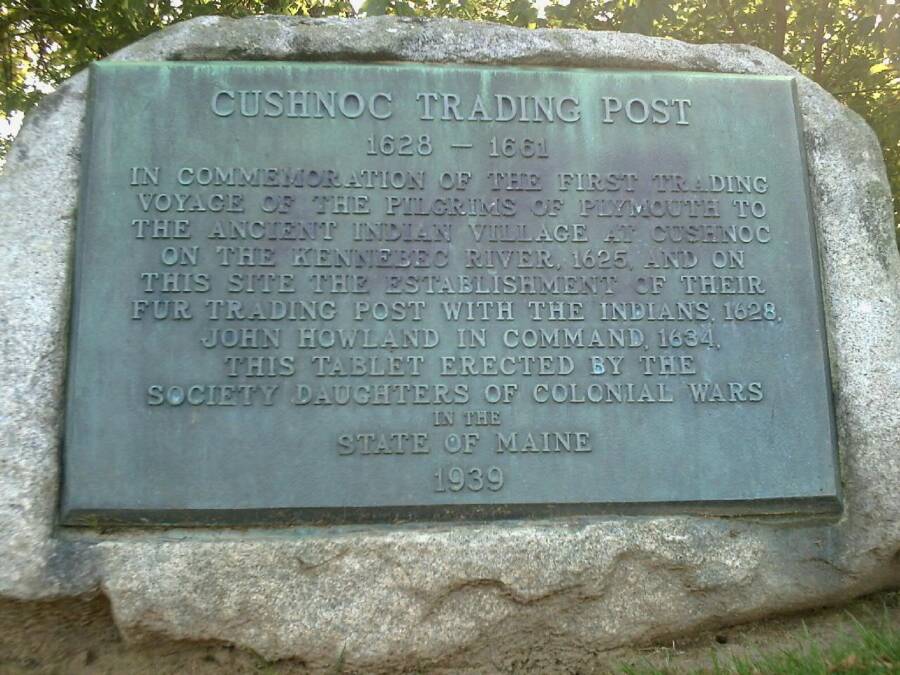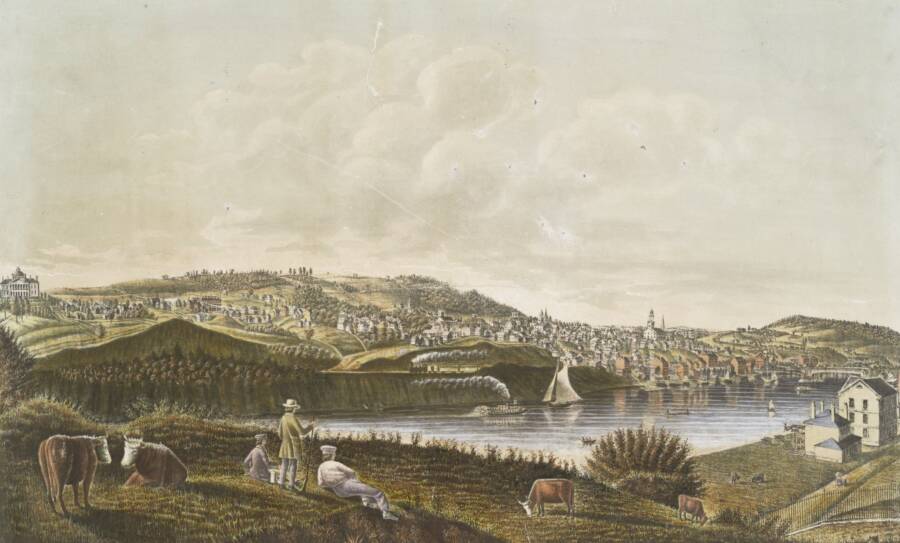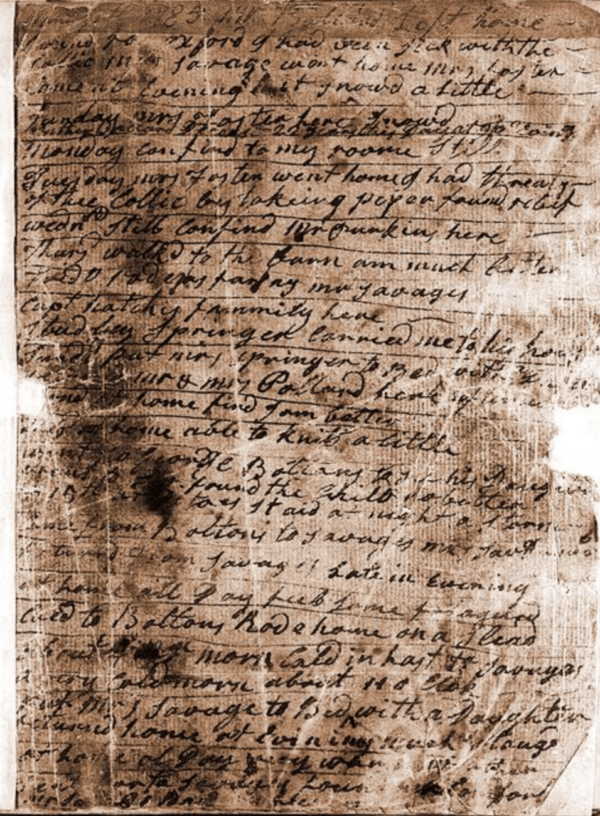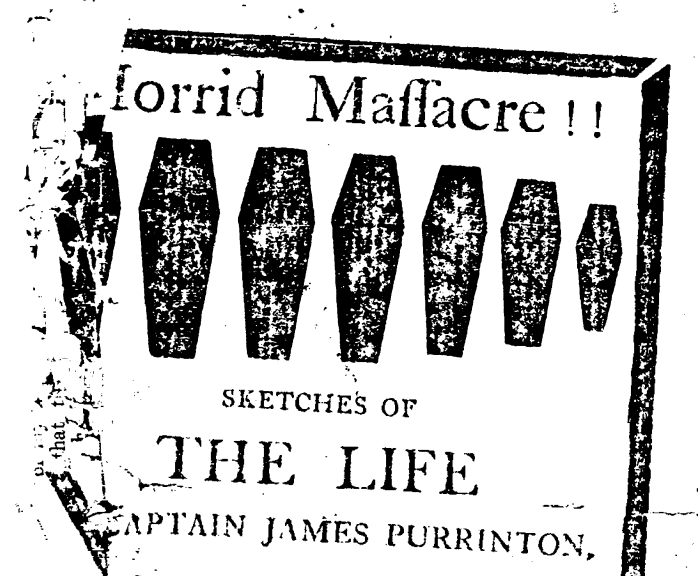In 1806, well-respected farmer James Purrington suddenly decided to murder his wife and seven of his children, leaving his neighbors in small-town Maine shocked and horrified.

Library of CongressA broadsheet printed two days after the slaughter spread the tale of the Purrington Massacre.
James Purrington was a man of “good character,” well respected in his community in Augusta, Maine. But that didn’t stop the farmer and Revolutionary War veteran from picking up an axe in the early morning hours of July 9, 1806, and murdering his wife and seven of his children.
“The whole house seemed covered in blood,” reported horrified neighbors when they arrived at the grisly scene later that day.
The Purrington Massacre shocked the small town of Augusta. Why would an upstanding farmer slaughter his family? The mourners wondered if it might have been “hereditary insanity” or “religious fanaticism” that had driven the father to kill.
But the more likely answer — and the more disturbing one — was that the Purrington Massacre was a carefully premeditated act.
Augusta, Maine And The Purrington Family
Augusta was a quiet town before the Purrington Massacre. Originally called Cushnoc by the Native Americans, this settlement within the Kennebec Valley gradually became known as a fur trading destination after white colonists from the Plymouth Colony created a trading post there in 1628, per the Augusta State Facilities Master Plan.

Terry Ross/Wikimedia CommonsA marker at the site of the Cushnoc Trading Post, later the town of Augusta, Maine.
But clashes with Native Americans drove white settlers from the valley for decades. In 1754, colonists returned to the valley and built Fort Western.
Soon, the white population in the valley grew. The fur trade was joined by a booming lumber trade, and a bridge over the Kennebec River linked Augusta with its neighboring towns in 1796.
By the early 1800s, the population reached 1,200, according to census data. The Purrington family made up 10 of those residents.
James Purrington, a captain and veteran of the Revolutionary War, and his wife Betsy had grown up in coastal Maine towns near Brunswick. After the couple married, they had twelve children, though tragically, four died as infants.
By 1805, the Purrington family had relocated up the Kennebec River to Augusta. James bought a farm a mile and a half north of the town, and the children, whose ages ranged from infancy to 19, helped run it.

New York Public LibraryThe idyllic town of Augusta, Maine in the 1800s.
But less than a year after moving to Augusta, the Purrington family would be destroyed.
The Final Days Before The Purrington Massacre
In the spring of 1806, Betsy Purrington regularly visited her neighbor, the midwife Martha Ballard, for tea, and often confided in her.
Betsy worried about James. One time, she found her husband sharpening a knife, and began to fear that James was planning to kill himself. Her suspicions proved true. In early July 1806, James Purrington confessed his plans in a letter to his brother.
“I am going on a long journey,” Purrington wrote, according to a broadsheet printed shortly after the massacre. He asked his brother to care for his sons, and closed his letter with an ominous instruction: “Divide what is left, for I am no more.”
But Betsy found the letter before James mailed it.
James swore he was not contemplating suicide. He convinced Betsy that he had merrily had a “presentiment of his approaching death.”
Still, there were other signs that something was troubling James Purrington. The farm, deep into its first summer, was failing, and Purrington often fretted when speaking to neighbors that he might run out of hay for his cattle and food for his family.
But no one in the quiet town of Augusta expected James Purrington to slaughter his family.
On the evening of July 8, 1806, Purrington sharpened his axe. After his wife and children went to bed, he stayed up late reading the Bible. And then, in the middle of the night, James Purrington began killing his family.
‘The Whole House Seemed Covered In Blood’
Around 2 a.m., seventeen-year-old James Purrington, Jr. woke up to the sound of his mother screaming. The boy leaped from bed ran to the main room. There, he was greeted by the sight of his father holding a bloody axe.
James Purrington swung at his son, hitting him on the back. Then, he turned on another son, giving the teenager time to escape and run to a neighbor’s house.
Yet by the time the neighbors reached the Purrington farm, it was to find almost the entire family dead.
Martha Ballard recorded the scene in her diary. Around 3 a.m., she wrote, neighbors banged on her door and “brought us the horrible tidings that Capt. Purrington had murdered all his family except his son James.”

Maine State LibraryA page from the diary of midwife Martha Ballard, a neighbor of the Purrington family.
After sunrise, Ballard visited the house. The midwife saw “the most shocking scene that was ever seen in this part of the world.”
Betsy Purrington had been slaughtered in her bedroom, her head nearly severed from her body. At her feet lay 10-year-old Anna.
Polly, the oldest daughter at 19 years old, was found dead in another room. Nearby, Martha, 15, lay wounded, her head resting on the corpse of her 18-month-old sister Louisa. Martha had lived through the night, but would die from her wounds soon after.
Brothers Nathaniel and Nathan, ages 8 and 6, had their throats slit, while their 12-year-old brother Benjamin lay dead in front of the hearth.
And after slaughtering his family, James Purrington had used a razor to cut his own throat.
The neighbors moved the bodies to the barn and washed them. Hundreds visited the scene of the crime. And the Ballards took in the surviving son, now an orphan.
Burying The Dead
News of the Purrington Massacre quickly spread beyond Augusta.
“Horrid Murder!” declared one broadsheet printed days after the crime. Another deemed it a “Horrid Massacre!” Both broadsheets printed a row of coffins next to the headline.

University of Maine LibraryAnother pamphlet promised to tell the story of the “horrid massacre” and the life of James Purrington.
Meanwhile, the residents of Augusta buried their dead. The funeral procession crossed the bridge and traveled along Augusta’s main streets to the cemetery. The coffins of Betsy Purrington and her seven deceased children were followed by the sole survivor, James Purrington, Jr.
A cart carrying James Purrington’s body closed the procession.
After burying the victims, the mourners crossed the highway and buried James Purrington, along with his axe and razor, in a plot outside of the cemetery, far from the wife and children he had murdered.
The Motive Behind The Purrington Massacre
What caused James Purrington to massacre his family? At the time, this sort of domestic crime was unprecedented, and the people of Augusta struggled to understand it.
“We have no evidence to lead us satisfactorily to the motives for this barbarous and unnatural deed,” concluded one broadsheet.
The town inquest reached a similar conclusion. They found James Purrington guilty of murder but did not agree on a motive.

Library of CongressThe order at the funeral procession for the Purrington family.
It might be “total derangement of the mind,” speculated one writer. Or it could be “religious fanaticism” or “violence of passion.”
But these motives failed to capture the horror of the Purrington Massacre.
James Purrington was “of a good character and fair reputation,” the mourners agreed. He had “steady, correct, and industrious habits.” So how did Augusta not realize he was a killer?
The only conclusion, the community agreed, per the Bulletin of the Maine State Library, was “an attack of hereditary insanity” that rendered Purrington “a maniac when he committed the deed.”
It was too horrifying to consider the alternative: that, after concluding that he was a failure as a farmer and a father, James Purrington planned to kill his family. Purrington’s outburst of domestic violence was not a momentary slip into insanity, but a premeditated act.
The Purrington Massacre horrified early America, but it wasn’t the only outburst of violence to rock the era. Next, read about Hannah Duston, the settler who brutally killed 10 Native Americans, and then learn about John Billington, the first murderer convicted in the English colonies.
If you or someone you know is contemplating suicide, call the National Suicide Prevention Lifeline at 1-800-273-8255 or use their 24/7 Lifeline Crisis Chat.





